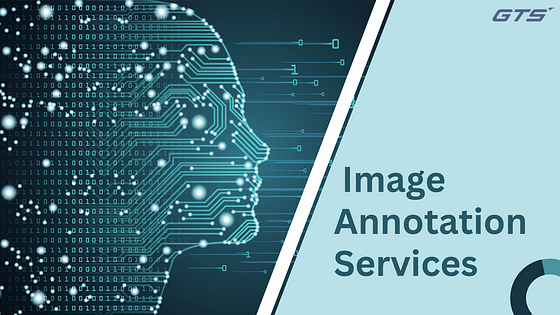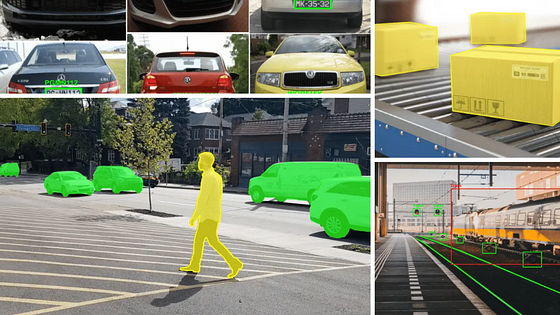How is Image Data Collection necessary for Image Annotation Services in Deep Learning
Deep learning is an aspect of machine learning (ML) which constitutes an artificial Intelligence subfield (AI). Deep learning will utilize to carry out more crucial tasks that aren’t explicitly programmed.
The deep learning neural network analyses data and finds pertinent information. They will divide into three layers: one layer for input, another layer that will conceal, and an out layer. A deep neural network can be created by connecting numerous smaller networks into layers. Deep learning assists in recognizing more intricate patterns and a better understanding of data that allows more accurate decisions in critical AI models, such as autonomous cars, medical research and other areas.
How Does Deep Learning Work?
Deep-learning systems will develop using a variety of deep-learning structures. Recurrent Neural Networks, Long Short-Term Memory Networks and Convolutional Networks are three kinds of neural networks.
The data used to train the Visual Perception Model, similar to the machine-learning model, are created through annotated images. Deep learning projects need sophisticated annotation techniques like 3D bounding boxes or semantic Segmentation to identify the object, classify it, and recognize objects more thoroughly to ensure more authentic learning.
These neural networks use different labels for training data to aid in deep learning using image tags depending on the algorithm’s capabilities and compatibility with models. For more precise annotation, we can use training data by deep learning algorithms to identify the object annotated in the image when a model will utilize for real-time prediction, which requires data analysis to determine the correct outputs.
Annotating Images for Deep Learning

Image annotation services for deep learning to improve the detection accuracy of objects. 3D Cuboid Annotation, Semantic Segmentation, as well as Polygon Annotation are used to mark images using the proper tools to make the objects that are in the picture clearly defined to aid in neural network analysis deep learning.
Deep Learning Image Annotation
While many methods for image annotation will use in machine learning, the procedure used in deep learning is distinctive. Deep understanding involves using deep neural networks that analyze data, find basic patterns, and then make precise predictions about the data.
Deep neural networks have several layers. The output of the initial layer becomes the input of the second layer,
while the result of that layer is the input for the third layer to understand the situation entirely.
The most popular techniques for image annotation that mark images for deep learning include 3D Bounding Box, Semantic Segmentation, and Polygon Annotation.
Annotating images for deep learning, but the correct method is employed to ensure that every image pixel accurately recognizes the various objects. Compared to machine learning techniques, feeding images into deep-learning algorithms is different.
Where Can I Find Annotated Images for Deep Learning?
A lot of Image annotation company provide machine-learning and AI annotation solutions. For deep learning, a professional must be able to mark the images for neural network processing precisely. It is the process engineers in machine learning will utilize to build the AI model.
The different types of annotations that are under consideration
Image annotation may refer to simple image descriptions, such as image segmentation during image processing. It is one of the terms commonly used in projects involving image processing. For instance, an image of animals in a field could be classified solely by the term “sheep”.
Adding bounding boxes to each object in the image can help object detection in machine-learning embodiments. AI learning images for animals means that each animal is boxed along with other essential things within the frame, like agricultural machinery.
Semantic Segmentation
It Attains greater precision than image classification and object detection. Outlining is a tool employed by annotators to show the exact shape of an object. For traffic jams, this could mean tracing lines of the bus and assigning the entire area inside to a specific category, e.g. “bus” or “large vehicle”.
This process will perform on each object. Another thing to consider is the space between these forms. It could include the sidewalk and the sky, nearby structures and the road in traffic pictures. Each one would be assigned an identifier and colour. This annotation style takes significantly longer, but it has an essential advantage in terms of precision.
Instance segmentation
Expands semantic Segmentation by noting the occurrences of a specific object by highlighting every event of a particular.
For road traffic pictures,
It implies that every car is highlighted and labelled with a distinct color.
This information can be helpful for designers who need to distinguish between the objects of interest in their image training data.
Unique techniques for image annotation
Annotators employ various techniques for annotation that apply annotation techniques to images used for training. The methods can precisely label a wide variety of prints, helping the training data to model the nature of the natural world accurately:
Annotation platforms allow users to drag boxes over items that are of significance. This is among the most widely employed method of annotation. But, since it can’t precisely capture an object’s shape, It is, in essence, less specific.
Polygon annotation

By using this annotation type, operators can create complicated forms. It works by joining tiny lines and vertices to outline any object. It is crucial in semantic Segmentation as it allows every pixel to be assigned correctly to a specific class.
Skeletal annotation is a method to determine the location of limbs on images. Lines are drawn on animal or human joints and then joined at joints of articulation, like knee joints. Machine learning models can discern motion and assess body positions in the process.
Image data collection for ML with GTS expertise knowledge
The collection and analysis of image data for training AI/ML involve collecting and preparing images to be used in the datasets to create AI/ML algorithms. It may include pictures of animals, humans, objects, and places. For instance, a CV-based system to determine the quality of the fruit on a conveyor belt could require training using hundreds of pictures. The scope of the work and the databases could be either large or even small. GTS.AI is a Data collection company and Data annotation company.
.png)

.png)
.png)
Comments
Post a Comment